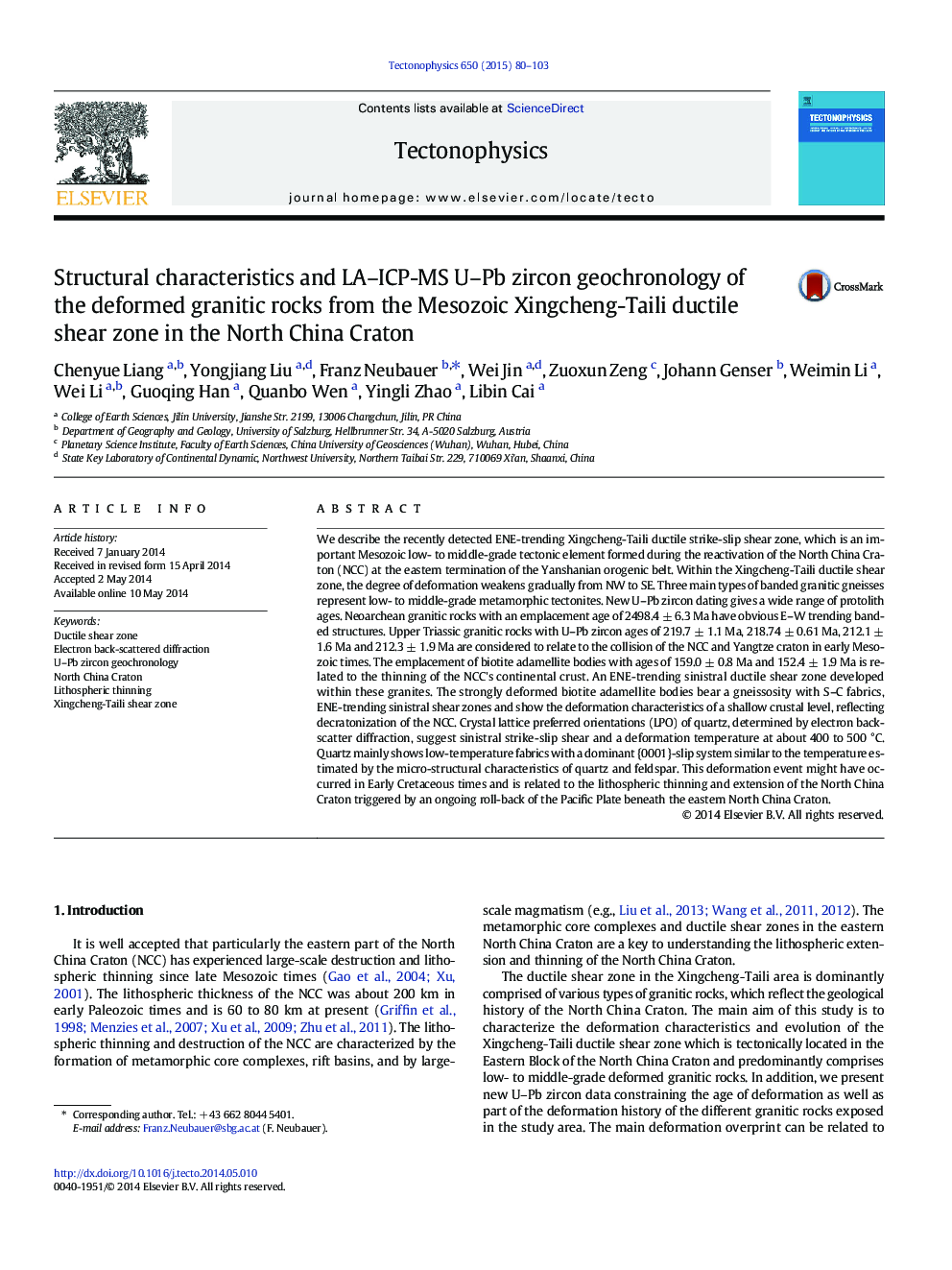| Article ID | Journal | Published Year | Pages | File Type |
|---|---|---|---|---|
| 4691565 | Tectonophysics | 2015 | 24 Pages |
•U-Pb zircon dating of Neoarchean, Triassic and Late Jurassic granitoids.•The ENE-trending sinistral shear zone formed at middle crustal levels.•Shear zone is related to ongoing Early Cretaceous roll-back of Pacific Plate beneath NCC.
We describe the recently detected ENE-trending Xingcheng-Taili ductile strike-slip shear zone, which is an important Mesozoic low- to middle-grade tectonic element formed during the reactivation of the North China Craton (NCC) at the eastern termination of the Yanshanian orogenic belt. Within the Xingcheng-Taili ductile shear zone, the degree of deformation weakens gradually from NW to SE. Three main types of banded granitic gneisses represent low- to middle-grade metamorphic tectonites. New U–Pb zircon dating gives a wide range of protolith ages. Neoarchean granitic rocks with an emplacement age of 2498.4 ± 6.3 Ma have obvious E–W trending banded structures. Upper Triassic granitic rocks with U–Pb zircon ages of 219.7 ± 1.1 Ma, 218.74 ± 0.61 Ma, 212.1 ± 1.6 Ma and 212.3 ± 1.9 Ma are considered to relate to the collision of the NCC and Yangtze craton in early Mesozoic times. The emplacement of biotite adamellite bodies with ages of 159.0 ± 0.8 Ma and 152.4 ± 1.9 Ma is related to the thinning of the NCC's continental crust. An ENE-trending sinistral ductile shear zone developed within these granites. The strongly deformed biotite adamellite bodies bear a gneissosity with S–C fabrics, ENE-trending sinistral shear zones and show the deformation characteristics of a shallow crustal level, reflecting decratonization of the NCC. Crystal lattice preferred orientations (LPO) of quartz, determined by electron back-scatter diffraction, suggest sinistral strike-slip shear and a deformation temperature at about 400 to 500 °C. Quartz mainly shows low-temperature fabrics with a dominant {0001}-slip system similar to the temperature estimated by the micro-structural characteristics of quartz and feldspar. This deformation event might have occurred in Early Cretaceous times and is related to the lithospheric thinning and extension of the North China Craton triggered by an ongoing roll-back of the Pacific Plate beneath the eastern North China Craton.
